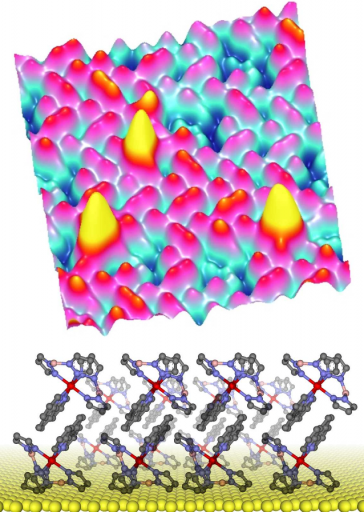Switchable nanomagnets could led to computer memory 1,000 times smaller
June 15, 2012

Illustration for the spin-crossover molecule used for the experiments on gold surface and the STM images of its different magnetic states (credit: Holger Naggert & Thiruvancheril Gopakumar)
Scientists of Kiel University have succeeded in selectively switching the magnetism of individual molecules or “spin-crossover complexes” on and off.
Using individual molecules instead of electronic or magnetic memory cells would revolutionize data storage technology, since molecular memories could be a thousand-fold smaller, the scientists suggest.
The interdisciplinary study is part of the Collaborative Research Centre 677 “Functions by Switching,” funded by the German Research Foundation (DFG). The results prove that it is technically possible to store information using molecules.
Using a scanning tunneling microscope, Kiel scientist Dr. Thiruvancheril Gopakumar was able to switch individual molecules between two magnetic states. Despite their dense packing in a molecular layer, he was able to target individual molecules for switching.
The next step will be to switch molecules with light instead of electrons and at higher temperatures.
Ref.: Gopakumar, TG, Matino, F, Naggert, H, Bannwarth, A, Tuczek, F, Berndt R, Electron-induced spin crossover of single molecules in a bilayer on gold, Angewandte Chemie, 2012, DOI: 10.1002/anie.201201203